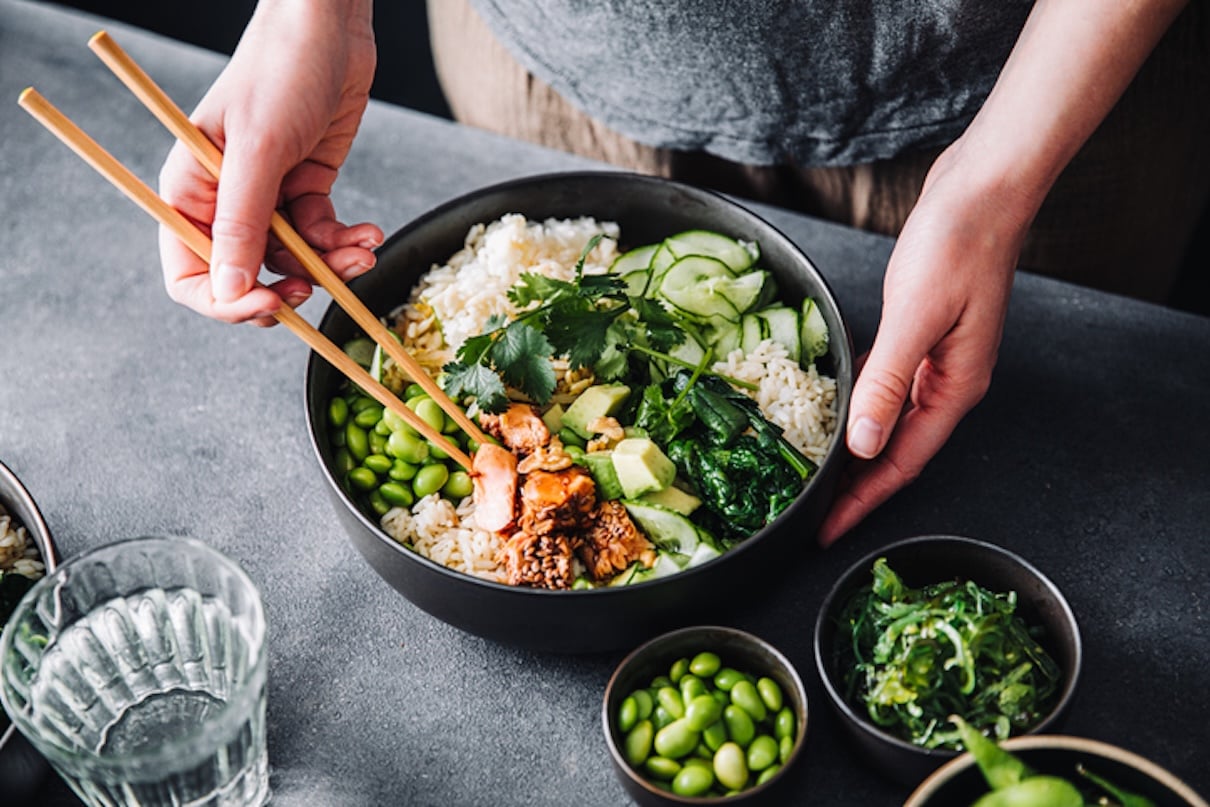
Fiber is one of the most crucial nutrients for overall health, yet it’s often overlooked in our daily diet. Unlike other carbohydrates, fiber isn’t digested by the body. However, it still plays many critical roles in supporting digestion, regulating blood sugar levels, and even helping with weight management.
Despite these benefits, most people don’t get enough fiber. In fact, 95% of Americans don’t meet their daily fiber needs, resulting in many health deficiencies. But meeting your fiber needs isn’t as difficult as it sounds. From fresh fruits and vegetables to whole grains and legumes, fiber is abundant in a wide variety of foods. In this article, we’ll dive into what fiber is, why it’s essential, how much you need, and how to easily include more of it in your diet.
What is Fiber?
Fiber is a type of carbohydrate that the body can’t digest and instead has to pass through the body undigested. It helps regulate the body’s use of sugars, helping to keep hunger and blood sugar in check. There are two types of fiber:
Soluble Fiber
Soluble fiber dissolves in water, creating a gel-like substance in the stomach, slowing digestion. This helps control your blood sugar and cholesterol. It’s also a crucial nutrient in weight management because it helps keep you full longer. Foods with soluble fiber include nuts, beans, lentils, blueberries, and apples.
Insoluble Fiber
Insoluble fiber doesn’t dissolve in water and typically remains whole as it passes through your stomach. It helps increase insulin sensitivity and supports a healthy gut for regularity. Foods with insoluble fibers include leafy greens, nuts, apples, whole wheat foods, and legumes.
Fiber Supplements
Fiber supplements are helpful in bridging the gap if you’re not meeting your daily fiber needs. They’re often used for treating constipation, diarrhea, or other digestive issues when used as directed. Plus, it’s easy to adjust the dose to your needs. HUMs Flatter Me Fiber, for example, is the perfect addition to support a balanced, whole-food diet. The fiber supplement naturally increases the body’s GLP-1 levels while tackling cravings, reducing bloating, and promoting regularity in bowel movements. It also breaks down proteins, carbs, fiber, and other essential nutrients, resulting in a happy, healthy gut.
Why is Fiber Important?
A high-fiber diet is an essential part of any diet, and meeting the daily intake can significantly reduce the risk of developing various conditions. Osteopathic Physician Lauren Davis explains, “Fiber is like your gut’s best friend—it keeps things moving, supports healthy digestion, and helps balance blood sugar and cholesterol levels. For postpartum moms especially, fiber is a lifesaver. It can ease constipation (which we all know is no fun after birth), calm inflammation, and feed the good bacteria in your gut that influence everything from energy levels to mental clarity. When you’re running on fumes and trying to recover, fiber is one of the easiest ways to feel better fast.”
Per the Academy of Nutrition and Dietetics, the recommended daily dose of fiber is as follows:
- Women: 25 grams of fiber per day
- Men: 38 grams of fiber per day
Foods High in Fiber
*Sizes are based on ‘standard portions’ by the USDA Dietary Guidelines for Americans
Fruits
- Apples: 4.8g of fiber
- Blueberries: 6.2g
- Raspberries: 8g
- Avocados: 5g
- Pears: 6.5g
- Guava: 8.9g
Vegetables
- Artichokes: 9.6g
- Winter Squash: 5.7g
- Broccoli: 5.2g
- Carrots: 4.8g
- Kale: 4.7g
- Brussels Sprouts: 6.4g
Whole Grains
- Whole wheat pasta: 7g
- Brown rice: 3.5g
- Barley: 17.3g
- Whole-grain cereals: 7g
- Oatmeal: 10.3g
Legumes and Beans
- Beans: 7-13g (depending on the type of bean)
- Chickpeas: 6.3g
- Split peas: 8.2g
- Lentils: 7.8g
Nuts and Seeds
- Almonds: 3.5g
- Pistachios: 2.9g
- Chia seeds: 4.1g
- Flax seeds: 2.8g
- Pumpkin seeds: 5.2g
- Sunflower seeds: 3.1g
FAQs
Can fiber help me lose weight?
Yes, consuming a healthy amount of fiber each day can help with weight loss. The fiber helps you feel full longer between eating and increases thermogenesis while controlling hunger and cravings. HUMs Ripped Rooster can help enhance these weight-loss benefits by boosting fat burning, controlling appetite, and reducing cravings, as well. The supplement increases these benefits with ingredients like 7-Keto, which helps burn fat for energy, and green tea extract, which supports fat metabolism and provides a steady energy boost. Together, fiber-rich foods and Ripped Rooster create a powerful duo for weight management.
Is it possible to get too much fiber?
“Absolutely!” Davis says. “Too much fiber, especially too quickly, can leave you feeling bloated, gassy, or even constipated, especially if you’re not drinking enough water. The trick is to go slow and steady—gradually add more fiber to your meals and make sure you’re staying hydrated. Your gut needs time to adjust to the changes.”
Is Fiber important for gut health?
Fiber is essential for a healthy gut. The nutrient helps promote regular bowel movements, providing the gut with beneficial bacteria and supporting a healthy gut lining. It also helps reduce inflammation and lowers the risk of digestive disorders like IBS and colon cancer. Prebiotic fibers (found in foods like bananas and garlic) nourish good gut bacteria, producing short-chain fatty acids (SCFAs) that strengthen the gut lining.
Can I take fiber supplements in place of fibrous food?
While fiber supplements can be helpful, they shouldn’t entirely replace fibrous foods in your diet. Unlike whole foods, supplements don’t provide vitamins, minerals, antioxidants, or other beneficial compounds found in fruits, vegetables, and whole grains. Additionally, whole foods offer both types of fiber (soluble and insoluble) for optimal gut health, whereas a fiber supplement typically only provides one type of fiber. Focus on getting most of your fiber from your diet; whatever fiber you’re still missing, you can supplement using our Flatterd Me Fiber for a boost.
What’s the best way to increase fiber intake?
When it comes to increasing your fiber intake, it’s important to be consistent and not rush the process. Davis suggests starting small and keeping it simple. “Add an extra serving of veggies to your dinner or throw some flaxseeds into your smoothie. Snack on fruits like apples or pears, or try a handful of nuts”, she says. “One of my favorites is to throw together some chia pudding with some collagen or protein powder. It’s the combo of fiber and protein that nourishes our body most. And don’t forget to drink plenty of water! Fiber works best when you’re hydrated, so keep that water bottle close.”
From improving digestion and supporting heart health to managing weight and regulating blood sugar, fiber offers many benefits that are too important to ignore when looking to maintain your healthiest self. While supplements can help fill the gap, whole foods like fruits, vegetables, legumes, and whole grains are the best sources of both soluble and insoluble fiber, delivering additional vitamins, minerals, and antioxidants that your body needs.
If you’re part of the 95% of Americans who fall short of their daily fiber intake, it’s time to start incorporating more high-fiber foods into your meals. Start small by adding a handful of nuts to your snack routine, swapping white bread for whole grain, or tossing extra vegetables into your next meal. Every step counts toward building a healthier you.




